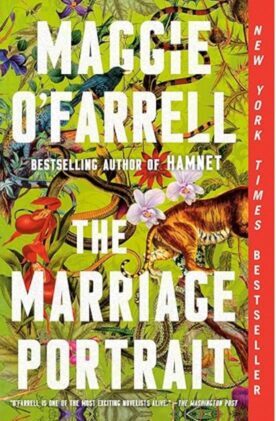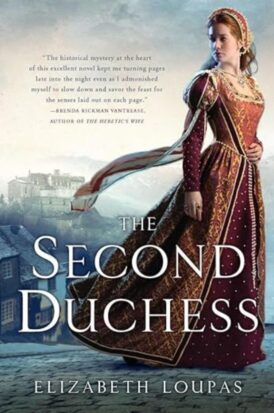The Mystery of Two Duchesses and their Duke
Greetings, Reader!
Why would you want to read about Duke Alfonso II, who ruled Ferrara during the Italian Renaissance, and his first two duchesses?
Why do 21st-century authors keep writing novels about these 16th-century Italians (who are unknown to 99% of people alive today)?
Spoiler clue: It’s the mystery that appeals to authors and readers—
Was 16-year-old Duchess Lucrezia murdered by her husband, poisoned on his orders,did she die of “putrid fever,”or did something else happen?
When I picked up The Marriage Portrait, Maggie O’Farrell’s recent novel set in Renaissance Italy, about Lucrezia de’ Medici (the third daughter of Grand Duke Cosimo de’Medici of Tuscany and first wife of Alfonso d’Este, Duke of Ferrara), I wondered:
How would this new novel compare to The Second Duchess, by Elizabeth Loupas, about Alfonso’s second wife, Barbara of Austria, (which I read when it came out in 2011)?

Although the two novels portray Lucrezia de’ Medici and her fate in very different ways, they share several elements:
Both novels engaged and entertained me, with strong plots and portrayals of their cultural settingsProtagonists (1st and 2nd duchesses) are pawns in the marriage checkerboard of ruling families—relatively young women sent to marry a man they’ve barely met in order to enhance their family’s standing.Both women face danger when they marry the duke and move to Ferrara because of:Their position as outsiders in the court at FerraraThe duke’s unrestrained power over the people and places he rules, combined with his volatile temperBoth duchesses take agency as they can—they don’t passively do their husband’s biddingBoth novels revolve around the question of how the 1st duchess, Lucrezia de’ Medici, died at the age of 16 after little more than 1 year of married life in FerraraNow, on to focus on The Marriage Portrait:Characters:
Lucrezia – protagonist, third daughter of Grand Duke Cosimo de’ Medici of Tuscany, portrayed as a brilliant, lonely misfit whose major way of expressing herself is by creating artEmilia – Lucrezia’s loyal personal servant who goes with her from Florence to Ferrara when Lucrezia marriesAlfonso d’Este, Duke of Ferrara – mercurial husband of LucreziaLeonello Baldassare – Alfonso’s cousin and best friend, he shows instant dislike for LucreziaElisabetta – Alfonso’s beautiful sister, friendly to LucreziaNunciata – Alfonso’s less attractive sister, suspicious and unfriendly to LucreziaJacopo – artist’s apprentice, bonds with Lucrezia due to their shared dialect (of Naples) and love of paintingStrengths:
Great character development and build-up of suspenseStrong plot and portrayal of cultural settingRemarkable ending in which the author pulls together all the clues she has planted throughout the novelWeakness:
Although the author mentions locations and dates at the beginning of each scene, alternating time periods between chapters may be confusing
Content review:
Marital sexual relations are mentioned, primarily to highlight both the era’s pressure for distinguished families to produce male heirs, and the wives’ lack of agency in this areaDepictions of violence common in this eraI recommend The Marriage Portrait to readers who enjoy novels with strong characters, surprising plots, long-ago settings, and plenty of suspense.
Reader, what are your favorite historical novels that include an element of mystery?
The post The Mystery of Two Duchesses and their Duke appeared first on C.L.R. Peterson, Author.



